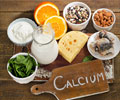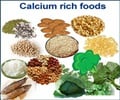Assessing the calcium deposits in the heart's arteries can help predict overall death risk in older people, says a new study.
A new study says that assessing the calcium deposits in the arteries of the heart can help predict death risk in older people.
Lead researcher Matthew J. Budoff at the Los Angeles Biomedical Research Institute at Harbor-UCLA Medical Centre (LA BioMed), said that previous studies had found measuring coronary arterial calcium with computed tomography (CT) heart scans could predict overall death risks in most American adults.The new study shows that extensive examination of coronary arterial scans can also help predict death risk in elderly also.
"This study indicates calcium scans can be the best predictor currently available to detect who is likely to suffer a heart attack and who is not," said Dr. Budoff.
"Previous studies found coronary arterial calcium scans were effective tools for determining the overall death risk in young adults, diabetics, smokers and those suffering from renal failure.
"This study indicates coronary arterial scans are effective in measuring overall death risk in the elderly," he added.
A calcium scan looks for calcification - or a hardening of the arteries caused by high blood fats and calcium deposits - in the arteries leading to and from the heart.
Advertisement
During the study, the researchers analysed 35,383 adults, aged 40 to 80, in for an average of 5.8 years after having a coronary artery calcium scan. Among these research volunteers, 3,570 were age 70 or older.
Advertisement
"This study provides additional validation of coronary calcium studies," said Dr. Budoff.
"Coronary arterial calcium scans can be very useful tools in assessing a patient's overall death risk. With this information, physicians can advise patients on diet, medications, exercise and other lifestyle changes that will help them avoid the risk of heart attack, strokes and other health problems," he added.
The new study is published in the July issue of Journal of the American College of Cardiology.
Source-ANI
RAS/S















